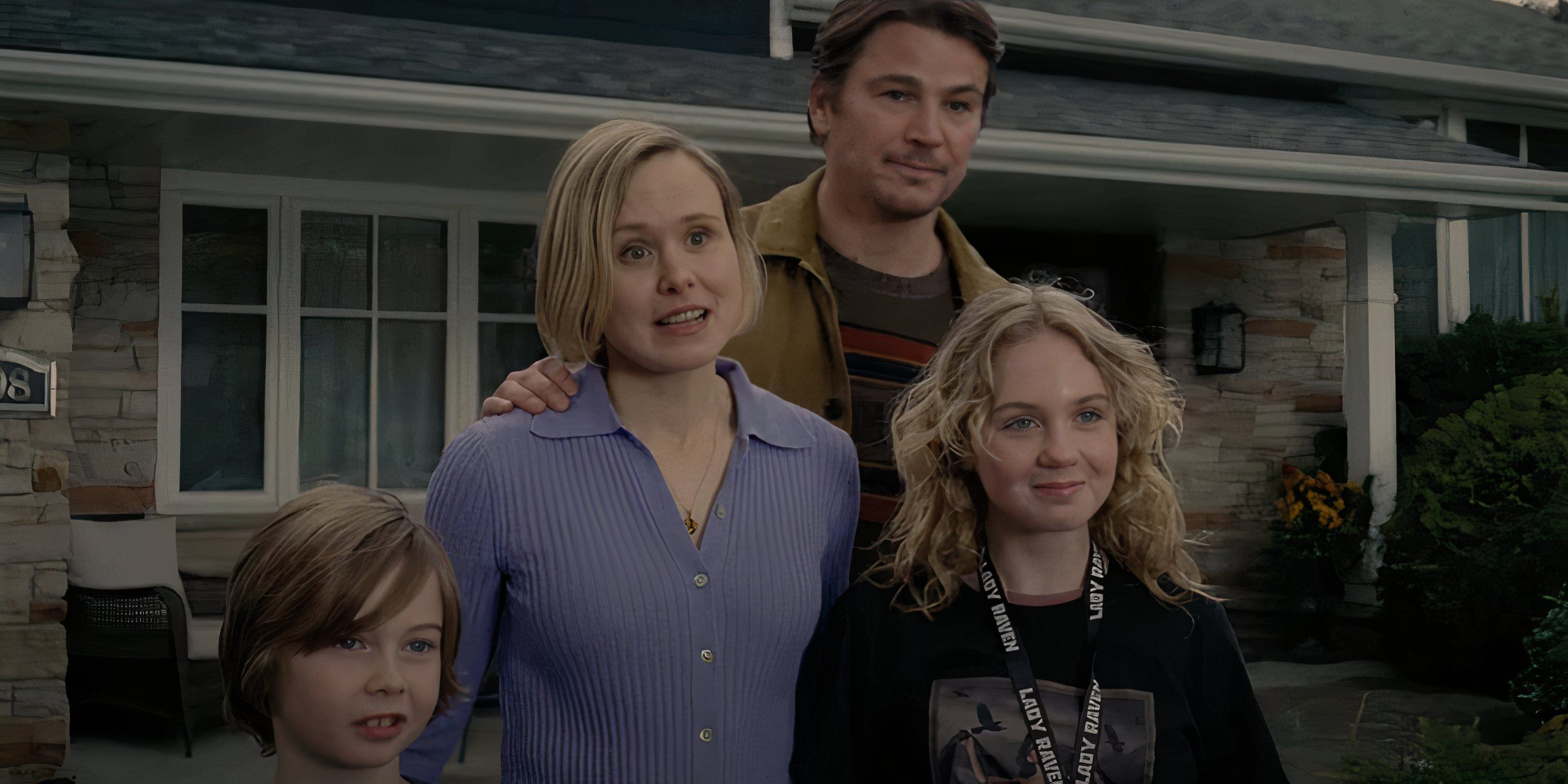The Ending Of Trap: Finding Your Way To A Fresh Start
Have you ever felt caught, like a character in a story that just keeps repeating the same scene? That feeling of being in a 'trap' is something many of us understand, a moment where it seems hard to move forward, or so it seems. It's a sense of being stuck, perhaps in a difficult situation, a repeating pattern, or even a way of thinking that holds you back. You might feel a bit frustrated, maybe even a little helpless, wondering when this particular chapter will finally close.
Yet, just like any good story, every situation, no matter how challenging, has an "ending." My text reminds us that an ending is a "conclusion," a "finale," the "last part of something." It's the point where things cease to continue in the same way, a termination that brings about a change. Thinking about the "ending of trap" isn't about wishing problems away, but rather about actively looking for that moment of culmination, that finish line.
This idea of reaching a "close" or a "climax" in a challenging situation is a powerful one, you know. It suggests that even the most stubborn patterns can have a final act, a point where they give way to something new. For anyone feeling the weight of a difficult circumstance, understanding how to approach the finish of a "trap" can be the first step towards a much brighter, more open future. It's really about taking back some control.
- People On Gutfeld
- Heart Touching Anniversary Wishes For Husband
- Sabrina Carpenter Bio
- Kevin In Shameless Us
- Denver Nuggets Vs San Antonio Spurs Matches
Table of Contents
- What Does the Ending of Trap Really Mean?
- Recognizing the Signs of a Trap
- The First Steps Towards a Conclusion
- Practical Ways to Reach the Finish
- Maintaining Your Freedom After the Close
- Frequently Asked Questions About Ending a Trap
- Moving Forward to Your New Beginning
What Does the Ending of Trap Really Mean?
When we talk about the "ending of trap," we're really thinking about that moment a difficult situation or a repeating, unhelpful pattern finally comes to a stop. My text describes an ending as a "termination or conclusion," the "last part of something," whether it's a book, a film, or an event. So, in our lives, this means reaching a point where a cycle of struggle, a limiting belief, or a challenging circumstance no longer holds power over us. It's about achieving a sense of freedom, a true release.
It's not always a sudden, dramatic "climax" like in a movie, you know. Sometimes, the finish of a trap happens gradually, like the slow dawn of a new day. It could be an emotional trap, where you keep reacting to things in the same old ways, or a financial one, where you feel stuck in a cycle of debt. It might even be a relationship dynamic that just isn't serving you anymore. The idea is that these situations, no matter how deep-seated, have a definite point where they can cease to be your reality. This understanding, in a way, gives us hope.
This concept of a "close" or "finish" implies a shift from being reactive to being proactive. It means taking charge of your own story and deciding how you want it to conclude. It’s about recognizing that you have the power to write a new "finale" for yourself, one that leads to growth and liberation. This perspective, honestly, can change everything for you.
- Weather Channel Jacqui Jeras Age
- James Comey Wife And Children
- Jimmy Carter Net Worth
- Memes Of Friends
- Rooney Mara And Kate Mara
Recognizing the Signs of a Trap
Before you can work towards the "ending of trap," you first need to spot that you're in one, which is that. This can sometimes be harder than it sounds, because these situations often feel like just "how things are." A common sign is a feeling of repetition, like you're living the same difficult day over and over. You might notice similar problems popping up in different areas of your life, or perhaps you find yourself reacting to situations in ways you don't like, but can't seem to change.
Another big clue is a persistent feeling of being stuck or powerless. You might feel a lack of options, or believe that your circumstances are simply unchangeable. This can show up as a constant sense of frustration, anxiety, or even a quiet resignation. Sometimes, too it's almost a feeling of being drained, like your energy is constantly being pulled away by this ongoing struggle. It's important to pay attention to these internal signals.
Consider your emotions and your typical responses. Do you often feel resentment, anger, or sadness related to a specific area of your life? Are there conversations you dread having, or situations you avoid because they always seem to go wrong? These are all potential indicators that you might be caught in some kind of "trap." Recognizing these patterns is, you know, the very first step towards finding a way out.
The First Steps Towards a Conclusion
Once you've identified a situation that feels like a "trap," the next step is to begin planning its "ending." This isn't about making drastic changes overnight, but rather about taking deliberate, thoughtful actions. The initial move often involves a period of honest self-reflection. Ask yourself: What exactly is this trap? What are its boundaries? What keeps me feeling caught? This kind of honest look can feel a bit uncomfortable, but it's really necessary for progress.
Another crucial first step is to redefine what "ending" means for your specific situation. My text shows us that an ending can be a "conclusion," a "finish," or even a "climax." For your trap, does the ending mean completely removing yourself from a situation, or does it mean changing your reaction to it? Perhaps it's about setting new boundaries, or learning new skills. Defining your desired "finale" gives you a clear target to aim for, which is pretty helpful.
Finally, start with small, manageable actions. Big changes can feel overwhelming, so breaking down the "ending of trap" into tiny steps makes it less daunting. This might involve researching new approaches, talking to someone you trust, or simply dedicating a few minutes each day to thinking about solutions. Even a very small shift in your routine or mindset can begin to loosen the grip of the trap, you know, setting the stage for its eventual close.
Practical Ways to Reach the Finish
Getting to the "ending of trap" often involves a mix of practical strategies and a shift in perspective. It's about actively creating the "conclusion" you want to see. One powerful approach is to challenge the beliefs that keep you stuck. Many traps are held in place by our own thoughts about what's possible or what we deserve. By questioning these ideas, you can start to loosen their hold, which is actually pretty freeing.
Another effective method is to focus on what you can control, rather than what you can't. Sometimes, we get caught up in trying to change external circumstances that are beyond our reach. Instead, direct your energy towards your own actions, your responses, and your personal growth. This internal shift can, in a way, change the entire dynamic of the trap, making it less effective.
Building new habits and routines can also pave the way for a "finish." If a trap is a repeating pattern, then new, positive patterns can disrupt it. This might mean dedicating time to personal development, learning new skills, or simply changing how you spend your free time. These small, consistent efforts, you know, accumulate over time to create significant change.
Re-evaluating Your Story
Think about the story you've been telling yourself about this "trap." My text mentions that an ending is "the way that the story ends." Are you stuck in a narrative where you're always the victim, or where things never work out? To reach the "ending of trap," you need to start rewriting that story. This involves recognizing your own strength and agency, seeing yourself as the hero who can shape the "finale."
Consider the lessons you've learned from being in this situation. Even difficult experiences offer valuable insights. By focusing on what you've gained, rather than just what you've lost, you can change your perspective on the entire experience. This shift, you know, can help you see the trap not as a permanent state, but as a temporary challenge with a definite conclusion. It's about finding the silver lining, basically.
Imagine what your life will look like once this trap has reached its "close." Visualizing this desired outcome can be a powerful motivator. What will you be doing? How will you feel? What new possibilities will open up? This mental exercise helps to solidify your commitment to reaching that "culmination" and moves you towards a more positive future.
Building New Foundations
To ensure the "ending of trap" is lasting, you often need to build new, stronger foundations in your life. This means creating support systems and healthy structures that prevent you from falling back into old patterns. For example, if the trap was financial, this might involve learning about budgeting and saving. If it was an emotional one, it could mean practicing mindfulness or developing better communication skills.
Focus on creating a positive environment around you. This might involve spending more time with people who uplift you, or decluttering your physical space. A supportive environment can make it much easier to sustain the changes you're making and help you move towards a true "finish." It's about setting yourself up for success, so to speak.
Investing in yourself, through learning or personal growth, is also a key part of building new foundations. This could be reading books, taking online courses, or even just exploring new hobbies. The more you grow as a person, the more resilient you become, making it harder for old "traps" to regain their hold. This personal development is, you know, a very important part of the process.
Seeking Support for the Climax
You don't have to face the "ending of trap" alone. Reaching a "climax" or a significant turning point can be challenging, and having support can make all the difference. This might involve talking to a trusted friend or family member who understands your situation. Sharing your experiences can provide comfort and new perspectives, which is quite helpful.
For more structured help, consider reaching out to professionals. A coach or a therapist can offer tools, strategies, and an objective viewpoint to help you navigate the process. They can provide guidance tailored to your specific situation, helping you to identify blind spots and accelerate your progress towards a true "conclusion." Many people find this kind of help incredibly valuable.
Joining a support group or a community with similar experiences can also be incredibly empowering. Knowing that others have faced and overcome similar "traps" can provide inspiration and a sense of shared understanding. These connections can offer practical advice and emotional encouragement, helping you to feel less isolated on your path to freedom. Learn more about personal growth strategies on our site, as they often help here.
Maintaining Your Freedom After the Close
Achieving the "ending of trap" isn't always a one-time event; it's often a continuous process of maintaining your newfound freedom. My text defines ending as a "termination or conclusion," but after that termination, you start a new beginning. This means being mindful of old patterns that might try to creep back in. It's about staying vigilant, you know, in a gentle way.
Regularly checking in with yourself is a good practice. How are you feeling? Are you noticing any familiar triggers or old ways of thinking? Addressing these early on can prevent them from developing back into a full-blown "trap." This self-awareness is, in some respects, your best defense against falling back into old habits. It's a bit like keeping your garden free of weeds.
Continuing to build on your personal growth is also key. Keep learning, keep trying new things, and keep expanding your horizons. The more you grow and evolve, the less likely you are to be caught by the same old challenges. This ongoing journey of self-improvement truly solidifies the "close" of your previous struggles and helps you embrace a fresh start. You can find more insights on this page about our approach to well-being.
Frequently Asked Questions About Ending a Trap
What does it really mean to experience the ending of a trap?
Experiencing the "ending of trap" means reaching a point where a difficult or limiting situation, a negative pattern, or a restrictive mindset no longer controls your life. It's the "conclusion" or "finish" of that particular challenge, allowing you to move forward with greater freedom and choice. It's about feeling unburdened, you know, from what was holding you back.
How can someone start the process towards the ending of a difficult situation?
Starting the process towards the "ending of trap" involves several key steps. First, recognize and clearly define the trap. Then, commit to making a change, even if it's a small one. Begin with self-reflection to understand its roots, and consider seeking support from trusted individuals or professionals. Taking small, consistent actions is also very important, basically.
Are there common signs that the ending of a trap is near?
Yes, there are often signs that the "ending of trap" is approaching. You might feel a renewed sense of hope or clarity, or find yourself naturally making choices that align with your desired future. Things that once felt overwhelming might seem more manageable. Sometimes, too, it's almost a feeling of lightness, like a heavy weight has been lifted. These are all good indicators that you're moving towards a true "conclusion."
Moving Forward to Your New Beginning
Thinking about the "ending of trap" can truly open up new paths for your life. It's about recognizing that every story, even a tough one, has its final pages, its "conclusion." Just like a film can have a "Hollywood happy ending," you too can shape the finish of your current challenges. It's about taking that step, you know, towards a fresh start.
The journey to the "close" of a difficult situation might not always be easy, but the freedom and growth that come from it are incredibly rewarding. It's about embracing your power to create a new "finale" for yourself, one that leads to more peace, joy, and fulfillment. Your text defines an ending as a "termination," and that termination can be the start of something truly wonderful. For more insights on personal change, consider looking at resources like Psychology Today.
So, as you reflect on what might be holding you back, remember that the "ending of trap" is always possible. It's within your reach to write a new chapter, one where you are no longer defined by past struggles but by the strength and resilience you've gained. This moment, you know, can be the start of your very own "beginning."
- Robertson And Sons
- Jennifer Love Hewitt Body Measurements
- Longest Ft Call 2024
- Who Is Aaron Rodgers Girlfriend Now
- Letter Of Introduction Teacher To Parents Examples

Trap Ending & All Twists Explained

Trap’s Twist Ending, Explained

Trap’s Twist Ending, Explained